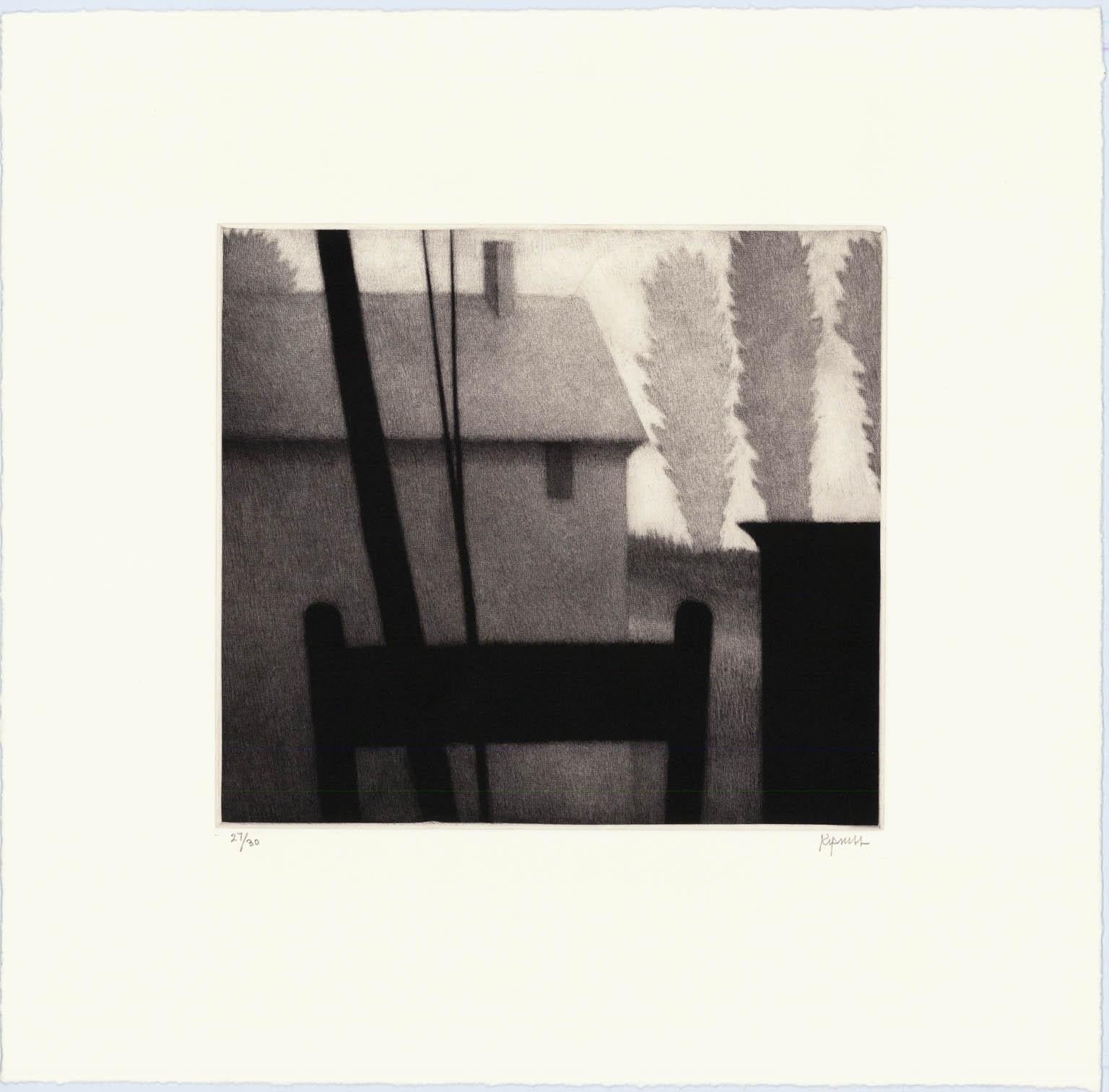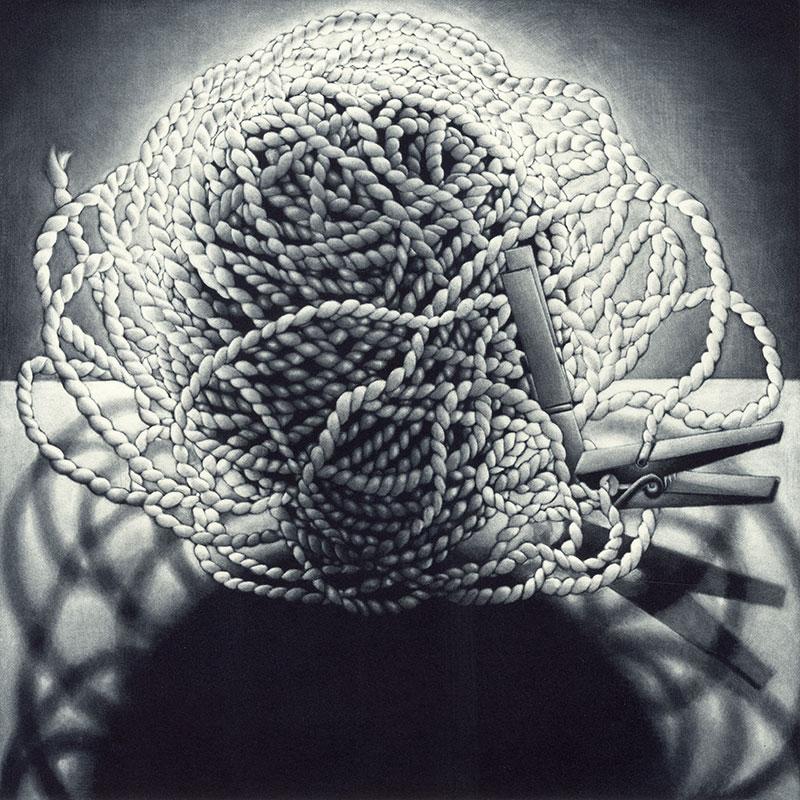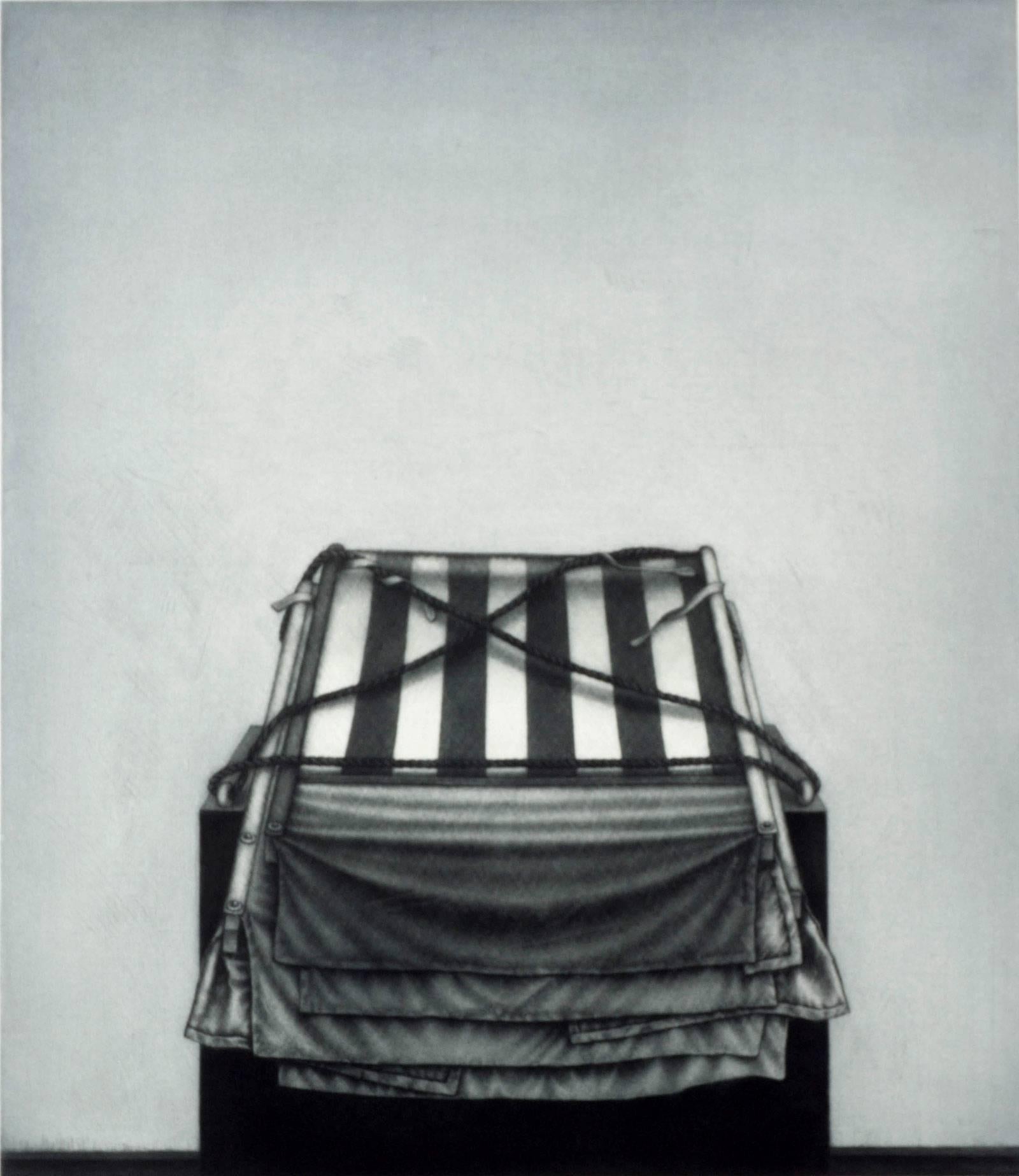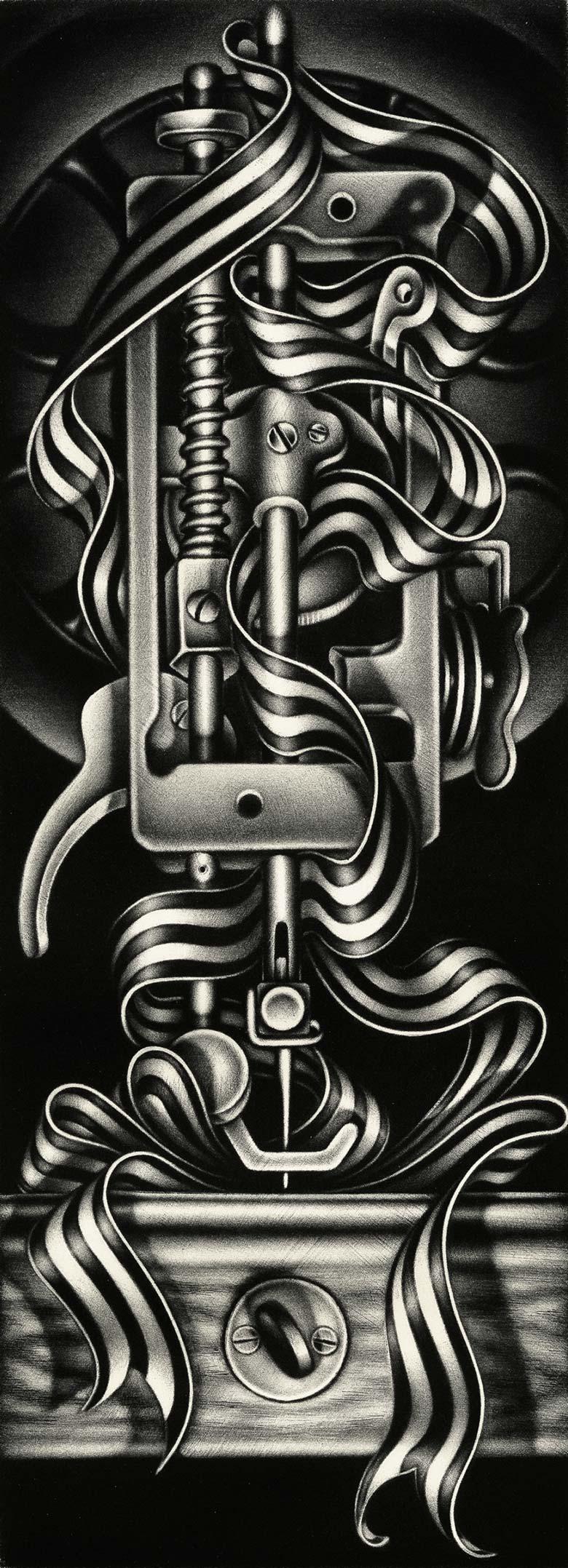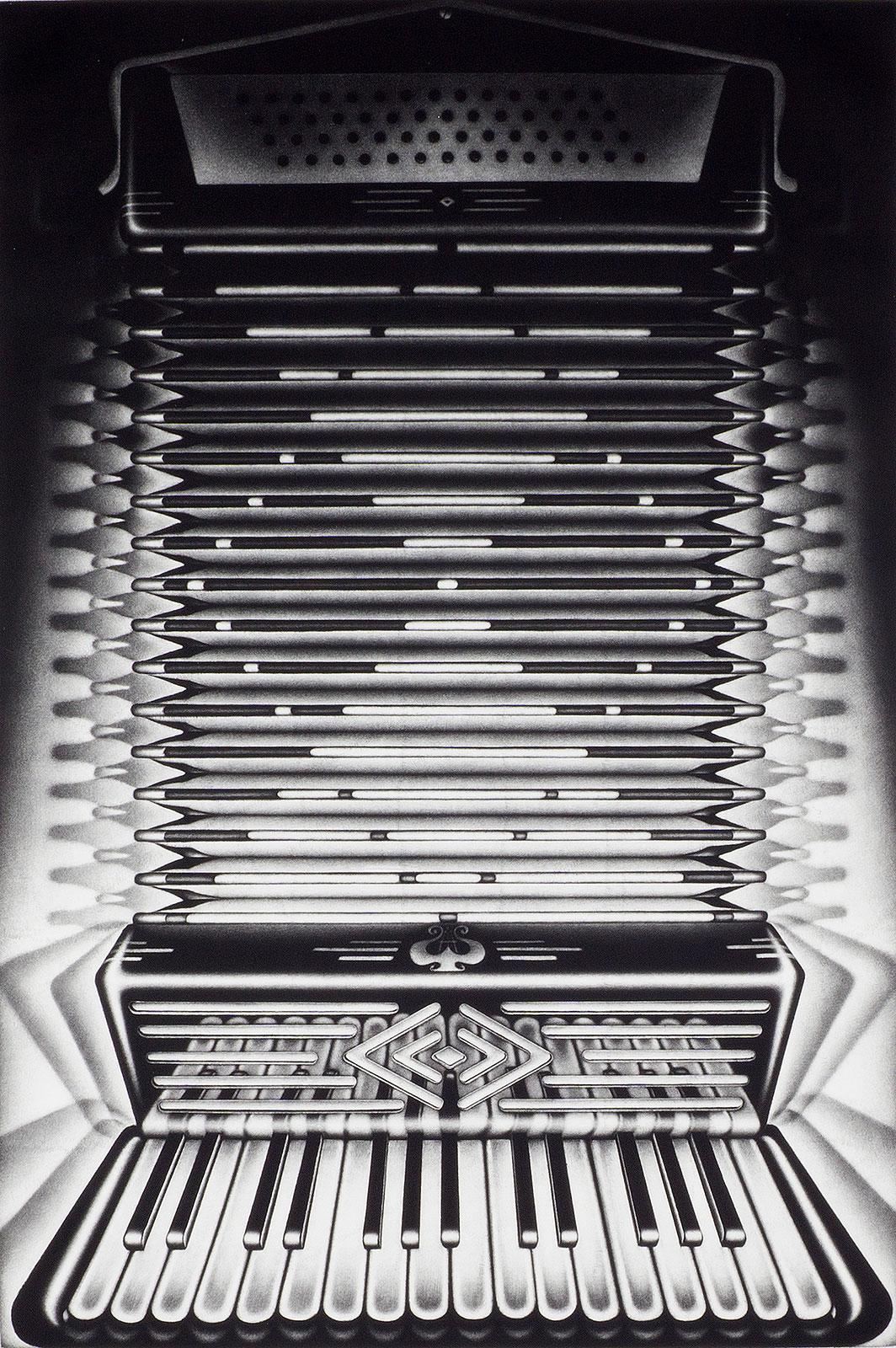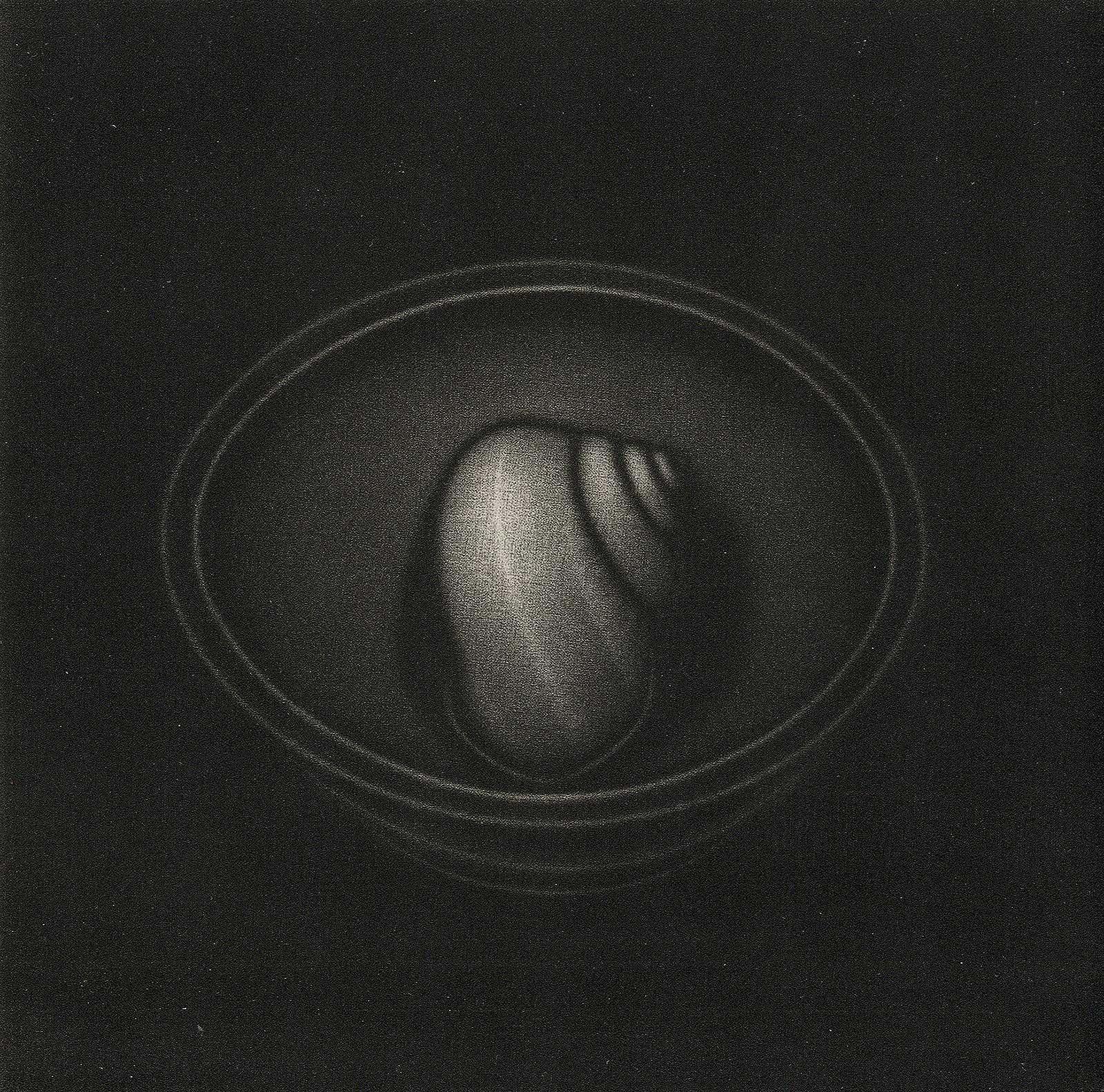Items Similar to Lemon Tree
Want more images or videos?
Request additional images or videos from the seller
1 of 6
Kazuhisa HondaLemon Treec. 1980s
c. 1980s
About the Item
Kazuhisa Honda (b. 1948)
"Lemon Tree" c. 1980s
Mezzotint
Signed Lower Right
Numbered Lower Left 81/250
Site Size: approx. 8 x 5 inches
Framed Size: approx. 16 x 2.5 inches
- Creator:Kazuhisa Honda (1948, Japanese)
- Creation Year:c. 1980s
- Dimensions:Height: 16 in (40.64 cm)Width: 12.5 in (31.75 cm)Depth: 1 in (2.54 cm)
- Medium:
- Movement & Style:
- Period:
- Condition:
- Gallery Location:Missouri, MO
- Reference Number:1stDibs: LU74735834621
About the Seller
5.0
Vetted Seller
These experienced sellers undergo a comprehensive evaluation by our team of in-house experts.
Established in 1970
1stDibs seller since 2017
141 sales on 1stDibs
Typical response time: 21 hours
- ShippingRetrieving quote...Ships From: Missouri, MO
- Return PolicyA return for this item may be initiated within 2 days of delivery.
More From This SellerView All
- Brown CottonwoodLocated in Missouri, MOBrown Cottonwood, 2005 By Andrew Millner (American, b. 1967) Lightjet Print Mounted on UV Plex Signed Lower Right Unframed: 87" x 44" Framed: 88" x 45" Andrew Millner is a visual artist based in St. Louis, MO. His work investigates the relationship between art and nature, the natural and the made. Millner received a BFA from University of Michigan, in Painting and Sculpture. He has had more than 56 group exhibitions since 1987 and over 15 solo exhibitions at institutions including Miller Yezerski Gallery, Boston, Massachusetts; Ellen Miller Gallery, Boston, Massachusetts; CCA, Santa Fe, New Mexico; Tria Gallery, New York City, New York; Richard Levy Gallery, Albuquerque, New Mexico; David Floria Gallery, Aspen, Colorado; Contemporary Museum St. Louis, St. Louis, Missouri. "I started drawing on the computer in 2005. Previous to that, most of my work had been about finding lines in nature; the contours of leaves, the ripples on rivers, the edges of overlapping hills. Although I was using traditional art materials, I prepared the canvases with slicker and slicker surfaces so that the lines wouldn’t soak into the background but sit on top, preserving the nuances of my hand. I thought of the drawings as photographic, in the diaristic sense of recording moments of time. I enjoyed the easy correspondence of the endless novelty of line in these natural forms and the endless variety of line created by my hand. I couldn’t draw the same leaf twice so my subject and process were well matched. I had the idea to draw every leaf of a tree, but I struggled with the scale and complexity of the subject. How does one bring a tree indoors? How can one see the whole tree and its individual parts simultaneously? I tried traditional strategies and materials but the results were unsatisfactory. I wondered if it would be possible to make the drawing on a computer. Since everything… music, photos, movies & books were being digitized, what about drawing? I wasn’t interested in something computer-generated, but sought to “dumb down” the computer and use it as a repository for simple line drawings. In the program I use, Adobe Illustrator, lines are called “paths”… an apt name since the line exists at no set scale or color. Only later do I assign the attributes of color and thickness. Taking my laptop outdoors, I drew my first tree “en plein air.” Using a digital tablet and pen, I drew simple contours of the leaves and branches. Having these drawings remain in digital form rather than in physical form, opened up interesting possibilities and enabled me to tackle the complexity of a tree in intriguing ways. My lines were free and separate from the background and from each other. I drew the branches individually and then later, I could cobble them together to reconstitute the whole tree. On the screen, I could zoom in and out and draw at different scales simultaneously. I could zoom out to draw a simple contour of the entire trunk and then zoom in to draw the smallest leaf with equal effort. I drew in layers so that as the drawings accumulated I could turn layers “off” so that they wouldn’t obscure subsequent layers. These two novelties, drawing at different scales simultaneously and making parts of the drawing invisible to allow for work on top or behind previous drawings, allowed for the accumulation of hundreds of simple outlines to create a dizzying visual complexity. Subsequent trees I drew from photographs. I would take hundreds of close-ups of a tree from a single point of view and then stitch all of these close ups together on the computer. Sometimes I photographed the same tree in the summer and then in the fall after it lost its leaves. This allowed me to see and draw all of the branches and limbs unadorned and unobscured. I would draw the tree twice, with and without leaves, merging the two drawings into one document. In this way, the drawings comprise and compress great spans of looking over vast time frames and seemingly contradictory close-up and distant points of view. My digital drawings have been outputted in different ways… mostly as photographs printed directly from the digital file or as archival inkjet prints. The results defy easy categorization. Are they drawings, prints, or camera-less photographs...Category
21st Century and Contemporary American Modern Still-life Prints
MaterialsPlexiglass, Inkjet
- Still Life on PorcelainBy Tom WesselmannLocated in Missouri, MOTom Wesselmann, (1931-2004) "Still Life" (Stilleben) 1988 Porcelain with Polychrome Ed. 169/299 Porcelain Size: approx. 13 x 14 inches Overall Size: approx. 18 3/4 x 20 inches Foun...Category
1980s Pop Art Still-life Prints
MaterialsPorcelain
- Apple (Poster) -- signedBy Roy LichtensteinLocated in Missouri, MOHand-Signed and dated Lower Right Original screenprint poster in yellow, red, blue an black on white wove paper. Designed by the artist for a traveling exhibition for the Saint Lou...Category
1980s Pop Art Still-life Prints
MaterialsScreen
- Portrait of Margaret van EyckBy Samuel Arlent EdwardsLocated in Missouri, MOA mezzotint by Samuel Arlent Edwards after the 1439 oil on wood painting by the Early Netherlandish master Jan van Eyck, titled, Portrait of Margaret van Eyck. The print is signed to the lower right margin. The image depicts the van Eyck’s wife, clothed in a red robe lined in squirrel fur...Category
19th Century Figurative Prints
MaterialsMezzotint
- In the BoudoirBy William AblettLocated in Missouri, MOAquating Engraving Image Size: Approx 19 x 15.5 Framed Size: Approx. 28.5 x 24.5 William Albert Ablett (1877 - 1937) Although born to English parents, William Ablett lived in Par...Category
Early 20th Century Art Deco Figurative Prints
MaterialsEngraving, Aquatint
- Shere Mill PondBy Sir Francis Seymour Haden, R.A.Located in Missouri, MOShere Mill Pond, No. II (large plate). 1860. Etching and drypoint. Schneiderman 37.v/ix. 7 x 13 1/8 (sheet 10 3/4 x 16 3/8). This state is prior to publication in Études à l'Eau-Forte. Illustrated: Keppel The Golden Age of Engraving; Print Collector's Quarterly 1 (1911): 18; : Guichard, British Etchers, 1850-1940. A rich, brilliant proof with drypoint burr printed on white laid paper. Signed in pencil. ------------------------------------------------------------------------------------------- Shere Mill Pond, No. II was one of the most highly praised landscape prints of the etching revival. An impression was exhibited at the Royal Academy in 1861 under Haden’s pseudonym, H. Dean. Francis Seymour Haden used this anagram of his own name early in his career as an artist, in order to retain his anonymity and preserve his professional reputation as a surgeon. Biography: Sir Francis Seymour Haden (16 September 1818 - 1 June 1910), was an English surgeon, best known as an etcher. He was born in London, his father, Charles Thomas Haden, being a well-known doctor and lover of music. He was educated at Derby School, Christ's Hospital, and University College, London, and also studied at the Sorbonne, Paris, where he took his degree in 1840. He was admitted as a member of the College of Surgeons in London in 1842. In 1843-1844, with his friends Duval, Le Cannes and Colonel Guibout, he travelled in Italy and made his first sketches from nature. Haden attended no art school and had no art teachers, but between 1845 and 1848 he studied portfolios of prints belonging to a second-hand dealer named Love, who had a shop in Bunhill Row, the old Quaker quarter of London. Arranging the prints in chronological order, he studied the works of the great original engravers, Albrecht Dürer, Lucas van Leyden and Rembrandt. These studies, besides influencing his original work, led to his important monograph on the etched work of Rembrandt. By lecture and book, and with the aid of the memorable exhibition at the Burlington Fine Arts Club in 1877, he tried to give a true reflection of Rembrandt's work, giving a nobler idea of the master's mind by taking away from the list of his works many dull and unseemly plates that had long been included in the lists. His reasons were founded upon the results of a study of the master's works in chronological order, and are clearly expressed in his monograph, The Etched Work of Rembrandt critically reconsidered, privately printed in 1877, and in The Etched Work of Rembrandt True and False (1895). Haden's printmaking was invigorated by his much younger brother-in-law, James Whistler, at the Haden home in Sloane Street in 1855. A press was installed there and for a while Haden and Whistler collaborated on a series of etchings of the Thames. The relationship and project did not last. Haden followed the art of original etching with such vigour that he became not only the foremost British exponent of that art but brought about its revival in England. His strenuous efforts and perseverance, aided by the secretarial ability of Sir WR Drake, resulted in the foundation of the Royal Society of Painter-Etchers and Engravers. As president he ruled the society with a strong hand from its first beginnings in 1880. Notwithstanding his study of the old masters of his art, Haden's own plates were very individual, and are particularly noticeable for a fine original treatment of landscape subjects, free and open in line, clear and well divided in mass, and full of a noble and dignified style of his own. Even when working from a picture his personality dominates the plate, as for example in the large plate he etched after J.M.W. Turner's "Calais Pier," which is a classical example of what interpretative work can do in black and white. Of his original plates, more than 250 in number, one of the most notable was the large "Breaking up of the Agamemnon." An early plate, rare and most beautiful, is "Thames Fisherman". "Mytton Hall" is broad in treatment, and a fine rendering of a shady avenue of yew trees leading to an old manor-house in sunlight. "Sub Tegmine" was etched in Greenwich Park in 1859; and "Early Morning--Richmond", full of the poetry and freshness of the hour, was done, according to Haden, actually at sunrise. One of the rarest and most beautiful of his plates is "A By-Road in Tipperary"; "Combe Bottom" is another; and "Shere Mill Pond" (both the small study and the larger plate), "Sunset in Ireland," "Penton Hook," "Grim Spain" and "Evening Fishing, Longparish," are also notable examples of his genius. A catalogue of his works was begun by Sir William Drake and completed by Harrington in 1880. During later years Haden began to practise the sister art...Category
Late 19th Century Old Masters Landscape Prints
MaterialsEtching, Drypoint
You May Also Like
- Chair & rooftoopBy Robert KipnissLocated in New York, NY“Chair & rooftop” is a mezzotint engraving created by Robert Kipniss in 2015. Printed in an edition of 30 this impression is signed in pencil and inscribed "27/30." The paper size i...Category
21st Century and Contemporary Modern Landscape Prints
MaterialsMezzotint
- The Old ClotheslineBy Carol WaxLocated in New Orleans, LAThis is the first image in which the artist used back lighting. "The Old Clothesline" is an edition of 75 and was featured on the cover of Carol Wax's book "The Mezzotint, History a...Category
Late 20th Century American Modern Still-life Prints
MaterialsMezzotint
- In Memory of an Historic PhraseBy Marc BalakjianLocated in New Orleans, LAMarc Balakjian was enigmatic in his subject matter creating images that are disturbing in their ambiguity. Is this image just striped fabric tied with ropes on a platform or is this is a flag-draped coffin symbolizing those who passed "in memory of an historic phrase"? Politicians may turn the phrase but a price must be paid. This small edition mezzotint was created in 1975 in an edition of only 5. Armenian by descent, Marc Balakjian was raised in Lebanon. He spent his early years in the small town of Rayak, before moving to Beirut at the age of 10. He came to England in 1966, initially to study architecture with a firm in Oxford. He then decided to study art at Hammersmith College of Art and took up a postgraduate degree in printmaking at the Slade School of Art in 1971. After graduating he began working at Studio Prints in 1973, just as it was establishing itself in Queen’s Crescent. By 1976 he had become a full time partner, collaborating with other artists as well as continuing his own work, much of which is inspired by his Armenian and Lebanese culture and heritage. By the 1980s work was falling off, so Balakjian and Studio Prints introduced in-house plate-making to serve painters and sculptors who had little experience with printmaking. Artists such as Leon Kossoff, Frank Auerbach, Lucian Freud and Ken Kiff...Category
1970s Modern Still-life Prints
MaterialsMezzotint
- Trim Fit (Deconstructed Singer machine gives both steel and silk equal weight)By Carol WaxLocated in New Orleans, LACarol Wax deconstructs a Singer sewing machine in this mezzotint created in an edition of 75. The image gives equal weight to the steel of the machine and the silk of the fabric. It...Category
Early 2000s American Modern Still-life Prints
MaterialsMezzotint
- Vertical Zydeco (Making Cajun music with rhythmic patterns of light and shadow)By Carol WaxLocated in New Orleans, LACarol Wax's "Vertical Zydeco" reflects a fascination with ways to suggest sound and movement through rhythmic patterns of light and shadow. It is an edition of 75. The image is real...Category
1990s American Modern Still-life Prints
MaterialsMezzotint
- Snail in a Bowl (Artist Proof inscribed to Fritz Eichenberg)Located in New Orleans, LALeonard Merchant's mezzotint, "Snail in Cup" is inscribed for fellow artist, Fritz Eichenberg. While a student at the Central School for Arts and Crafts in London, a young Leonard Marchant found an engraving rocker in a cupboard and proceeded to turn himself into a master of the painstaking art of mezzotinting. Marchant, who has died in Shrewsbury aged 70, grew up in Simonstown, the Royal Navy's enclave in South Africa. Though his first job was as a parliamentary messenger, he taught himself to paint and, aged 19, was given a one-man show in Cape Town. Fired by this success, he left for England to study painting and, he claimed, to escape the stifling home atmosphere created by his Catholic mother and aunts. (His father was killed in the second world war.) Without contacts in London, he phoned Jacob Epstein, whose recommendation resulted in a grant to study briefly at the Central School. It was later, when studying full-time at the Central, that he saw the mezzotints of the Japanese master, Yozo Hamaguchi, in a London gallery. He was hooked. Creating a mezzotint is tedious in the extreme. The copper plate must first be prepared with a "rocker" which roughens the surface. A plate may be "rocked" 30 or 40 times. The rough texture is then reduced with a burnisher and a scraper, allowing the print a range of tones from velvety black through the greys to white. Marchant's plates could be months in the making. But the technical demands were the least of his worries. In its 18th- and 19th-century heyday, mezzotint was solely a reproductive medium, for copying masters such as Reynolds and Turner. The development of photography rendered it unfashionable, and by the 1960s the technique, known as la manière anglaise, was a bygone medium. Marchant, by now a teacher in printmaking at the Central, began to create original mezzotints with a colleague, Radavan Kraguly. A perfectionist, he seemed to revel in the straitjacket procedure. Perhaps it was the metaphor of bringing darkness out of light that appealed to this straight-talking, sometimes sombre, man, who would suddenly relax and light up like a gleaming hue on one of his prints. His work was of squares and triangles with the occasional cat, black and ominous, and carefully arranged still lifes, featuring plants, a seed pod, a pot he might have bought at auction to celebrate the sale of a print. There were one-man shows, notably at the Bankside Gallery. He sold well at the Royal Academy summer exhibition, was a Florence Biennale prizewinner, spent a fellowship year at the British School in Rome, and was elected a Fellow of the Royal Society of Painter-Printmakers. But making mezzotints was not a paying job. Marchant and his South African wife...Category
1980s Modern Animal Prints
MaterialsMezzotint
Recently Viewed
View AllMore Ways To Browse
Lemon Tree
Vintage Lemon Sign
Lemon Vintage Print
Brennie Brackett
Carolyn Muskat On Sale
Bubblegum Machine
David Halliday On Sale
30 Wayne Hills Mall
Ed Baynard On Sale
Reflections By Lee Teter
Hugh Kepets On Sale
Hermes Black City Bag With Pearls
J Whiteman Parker
Geraldine Girvan
Garden Talk Yuji Hiratsuka
Edward Joseph Lowe
Bloomingdales West Palm Beach
Bouqet Chagall
